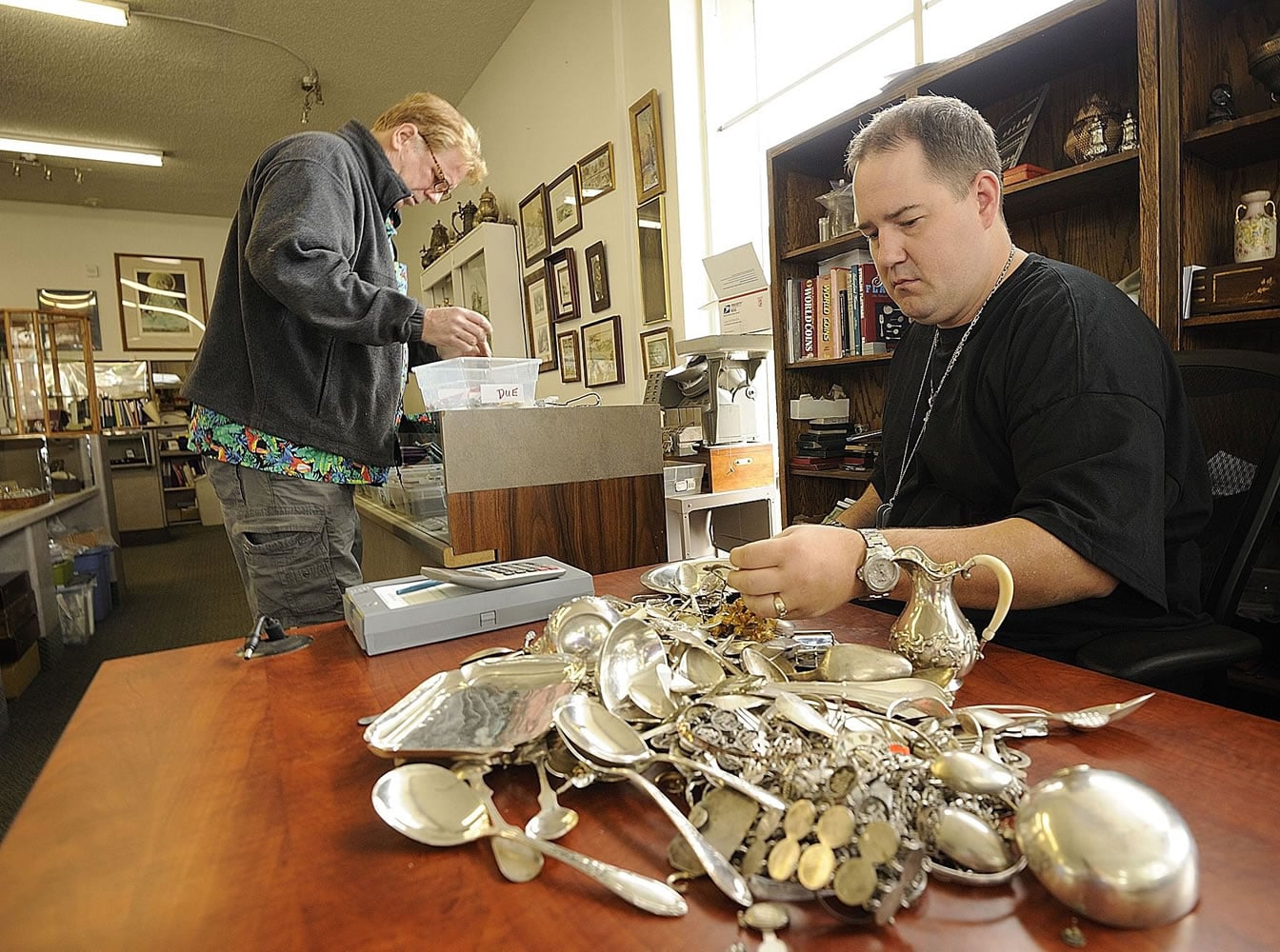It’s hard to imagine someone beating a hammer against a precious object. Especially when it’s a silver proof coin, encased in a protective plastic case — a case designed to protect the mint coin from dust, smudge prints and the ravages of time.
But that was the scene in front of Pacific Jewelers on Main Street on a recent morning: A stack of Australian mint silver coins, cracked from their protective plastic cases with the smack of a hammer’s blow.
It’s something that Norbert Anderson, owner of Pacific Jewelers, is doing more often these days as customers tote in stacks of silverware, coins, jewelry, hollowware and more to sell.
“Anything made of silver,” Anderson said.
The reason for this seeming desecration of once-precious objects? A surge in silver prices has made the precious metal, in some instances, more valuable than the object it was crafted into. And that has folks digging out — and digging up from backyards — long-forgotten silver caches to sell for cash.



